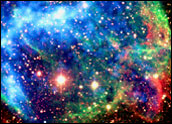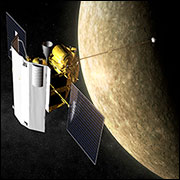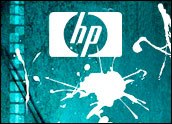
Lasers amplify light. The name itself is an acronym for “Light Amplification by Stimulated Emission of Radiation.” It’s only natural then that the world’s first anti-laser cancels light, and could spark applications in optical supercomputing and radiation oncology.

“Our device is a laser that works backwards, absorbing light at specific frequencies rather than emitting it,” said Yale University physics professor Hui Cao, who invented the device with fellow Yale physics professor A. Douglas Stone and published the results in the Feb. 18 issue of the journal Science.
“It absorbs light by setting up a trap within a cavity that contains absorbing materials, so that all the light will be absorbed eventually,” Cao told TechNewsWorld.
“Several physicists have hinted at the concept of an anti-laser in books and scientific papers, but no one ever developed the idea,” Stone explained.
The technique can both increase and decrease light absorption, making it an optical switch candidate, said Frost & Sullivan telecommunications program director Michael Jude.
“It’s an interesting device that introduces several potential capabilities but also poses some design challenges,” Jude told TechNewsWorld.
Gain and Loss
Invented in 1960, the conventional laser uses a “gain medium” — usually a semiconductor such as gallium arsenide — to cohere and emit a beam of light waves with the same frequency and amplitude. So ultra-focused is laser light that it has powerful properties, from cutting through steel to moving information at light speed in computers and telecom networks.
The opposite of “gain” is “loss,” and the Yale team used another semiconductor material — silicon — as a “loss medium” to build not a coherent light emitter, but a coherent perfect absorber (CPA). To demonstrate, they fired two laser beams into a cavity containing a silicon wafer that trapped the light waves, causing them to bounce back and forth until the cavity transformed them into heat.
Coherent perfect absorbers could be used as optical switches and detectors in next-gen optical supercomputers, Stone explained. They might also be helpful in targeting radiation therapies to small regions containing cancerous cells.
“Think about the optic domain as similar to the electronic domain,” Frost & Sullivan’s Jude explained. “Both have active devices such as gates, and passive devices such as resistors and capacitors that alternate a signal or change its frequency. In optics, they’ve been working on both types of elements, while focusing a lot on the question, ‘What’s an appropriate passive device in the optical domain?’ When I look at this anti-laser, I’m saying, ‘Oh! There’s an appropriate passive device in the optical domain. There’s an optical resistor.'”
The ‘Almost Anti’ Laser
To build a workable resistor, the Yale team needs to build in varying degrees of light transfer efficiency, just as an electronics engineer would build resistors with varying degrees of resistance: 50 percent, 25 percent, and so forth, Jude explained.
But to build a better optical resistor, the anti-laser would have to become the “almost anti” laser.
“If they can tune this device so that at least some light can get through, in varying quantities, it could be useful in the passive optical domain,” Jude said.
Right now, however, the Yale scientists are working on just the opposite problem: how to get their anti-laser to absorb 99.999 percent of incoming light, the theoretical limit. The current version absorbs 99.4 percent.
“The CPA we built is just a proof of concept,” Stone told TechNewsWorld. “I’m confident we will start to approach the theoretical limit as we build more sophisticated CPAs.”
Greater sophistication — as Apple has repeatedly proven — means smaller size. Future CPAs will likely shrink, from the current one centimeter width to six microns, much smaller even than a human hair.
Shrinking may prove utterly necessary if the device is deployed in great numbers, Michael Jude explained.
“One of the virtues of optical computing is that it doesn’t leave much residual heat — but as the anti-laser absorbs light, it produces heat,” Jude said. “In technologies that use CPAs in quantity, that could lead to some real heat dissipation limitations.”





















































